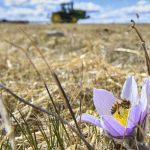
Tag Archives crop pests

USask-led startup testing AI insect management app for Prairie growers
For beta testing, the developers are now seeking Prairie farmers to try it out

Canola’s least wanted
Experts discuss pests and pathogens canola growers will want to watch for in 2024

Insects posing problems in Saskatchewan crops
Grasshopper, flea beetle damage already reported

Prairie insect pest outlook for 2023
Grasshoppers top the threat list but flea beetles, wheat midge, lygus bug, cutworms, bertha army worm and wheat stem sawfly are also risks in some areas

Consider variable costs when planning your rotation
Q & A with an expert

Successful pest protection and prevention programs
Given the right advice and a willingness to co-operate, Prairie growers can do a lot to mitigate or prevent crop yield losses

Crop advisor casebook: What’s causing bare patches in this soybean field?
A Crop Advisor's Solution from the July 13, 2021 issue of Grainews

Tips to scout and identify crop pest grasshopper species
Flying before June, coloured hind wings and sings? It’s not eating your crops. Here’s how to identify the ones that are

Your 2020 canola insect roundup
How big of a bite did pests take out of canola crops last year?

Insect pests to watch for in 2021
Provincial experts discuss top pest threats for your region and offer tips for scouting


